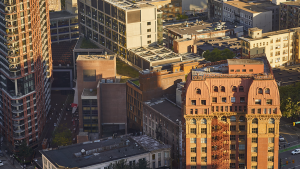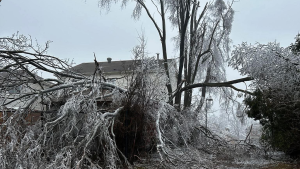A planning consultant representing a consortium of Hamilton, Ont. developers is spearheading an urban expansion on rural lands with economic stimulus among its pursuits.
The Upper West Side/Twenty Road West project in is a collaborative effort of what makes up the Upper West Side Landowner Group and is being led by group manager and landowner consultant John Corbett.
“This group has been informally in existence for 20 to 25 years,” said Corbett of the consortium, which is compromised of Sullstar Twenty Limited, Spallaci and Sons Limited, Oxford Road Developments, Lynmount Developments Inc., the Parente Group, Twenty Road Developments Inc. and Liv Communities.
They are looking to utilize Ontario’s 2019 More Homes More Choice Act, which allows developers to make pitches for rural land parcels 40-hectares at a time and will significantly fast-track the application process.
Prior to 2019, urban boundary expansion requests were at the mercy of exhaustive reviews of municipal planning policies, which could take years for applications to be processed.
The group is proposing a medium density community within the Twenty Road West area of Glanbrook, adjacent to John C. Munro Hamilton International Airport, of about 70 units per hectare — approximately 6,000 in total of various forms of townhouses and a limited number of single dwelling homes.
“There are 120 hectares in total. We will be filing three 40-hectare applications. If we achieve approvals soon we can deliver completion in two to five years given the current housing market conditions,” said Corbett. “It will attract new homebuyers with competitive land values, with schools, parks and public spaces.”
The project is projected to produce $203 million in development charges and $60 million in annual revenue, a much needed economic stimulus in the era of COVID-19 and its financial ramifications, Corbett stated.
“In the post-COVID economic era, municipalities will face unprecedented financial pressures which will cripple service levels and infrastructure funding. Development related revenues — building permit fees and development charges — will be one of the only non-tax solutions to address this impending crisis,” he said.
“This project will immediately deliver $200 million in building permit and development charge revenue and $60 million annually in real estate assessment. This does not include the positive impact of the project in terms of construction jobs and spin-off expenditures in the community.
“Projects such as the Upper West Side Community that are essentially shovel-ready need to be fast tracked through the planning approval process to realize both the planning and financial benefits that will be produced to ease the burden on municipalities and the taxpayer in the post-COVID environment.”
This will be the first urban boundary expansion application the City of Hamilton has received since the legislation, which brings a host of other firsts for the city to consider in this and future such proposals.
“There are a number of studies that have to be undertaken as part of the application. There are similarities to the larger GRIDS project but for their areas only. Examples of these studies include environmental impact statements, servicing studies, traffic studies,” said Joanne Hickey Evans, manager of policy planning and zoning bylaw reform with the city’s planning division.
She further explained these applications are allowed to proceed in advance of a municipal comprehensive review (MCR). The MCR and the city’s growth management strategy is a longer growth management process that would be completed by mid-2022.
While the amended process is being exercised, the province says its commitment to protecting the Greenbelt has not changed.
“More Homes, More Choice and A Place to Grow will help provide the people of Ontario with more choices that fit their needs and their budget and ensure communities can grow and prosper, while protecting the environment and health and safety of Ontarians,” said Ontario Ministry of Municipal Affairs and Housing spokesperson Conrad Spezowka.
“A Place to Grow enables upper and single-tier municipalities to consider settlement area boundary expansions outside of the Greenbelt to accommodate forecasted population and employment growth, including new housing. This allows for minor adjustments and eliminates red tape to encourage the development of housing and investment in the GGH (Greater Golden Horseshoe) area. Expansions larger than 40 hectares in area are subject to approval by the minister.”










Recent Comments
comments for this post are closed